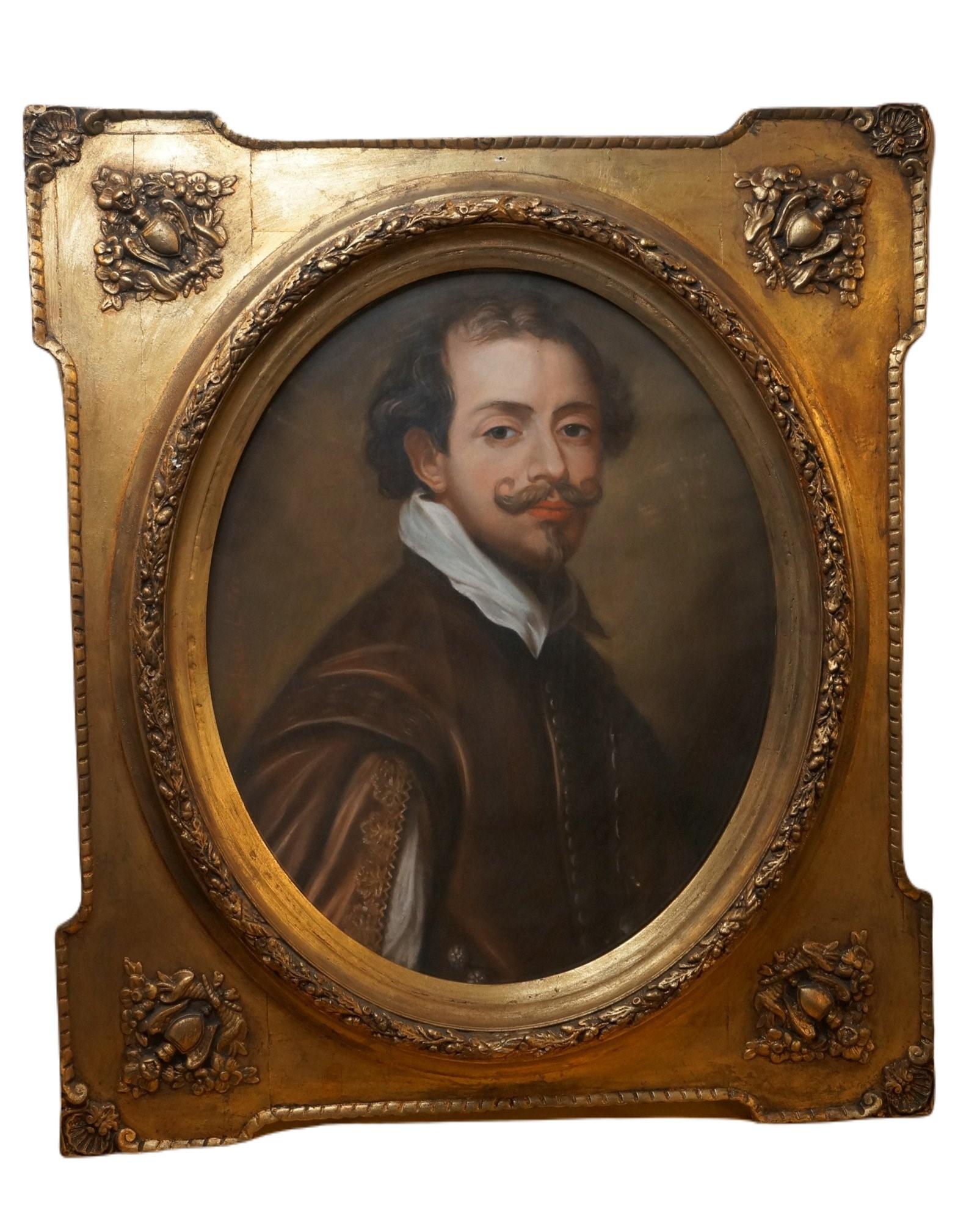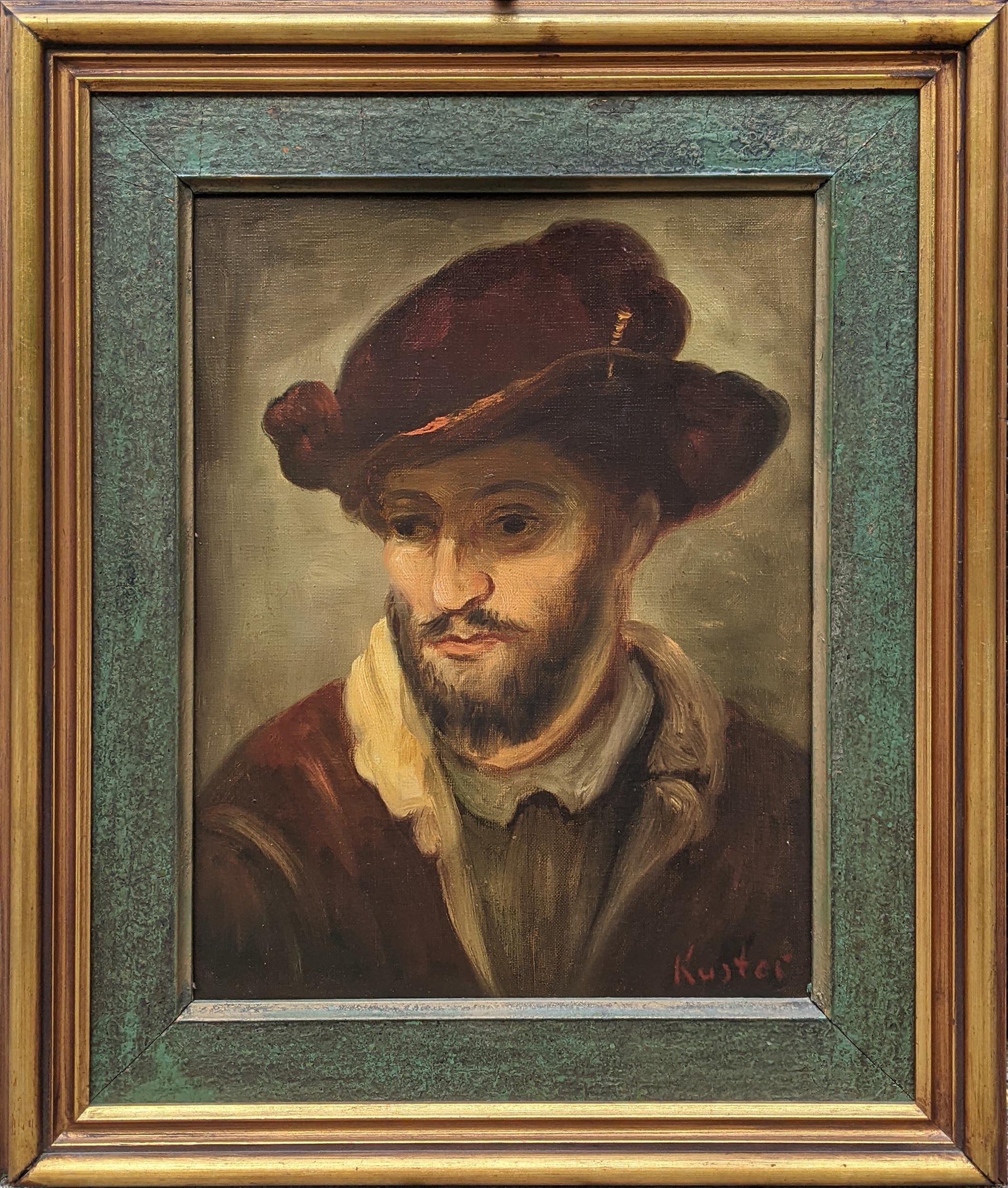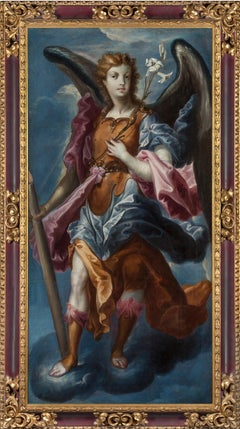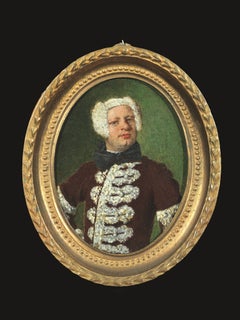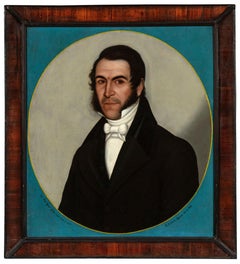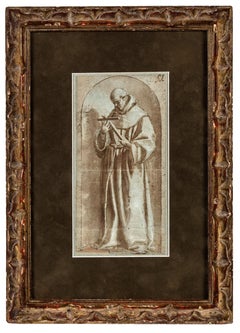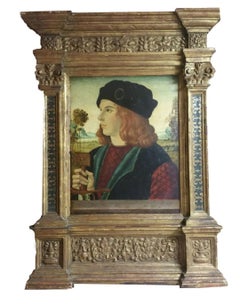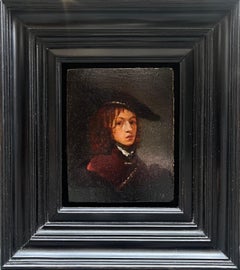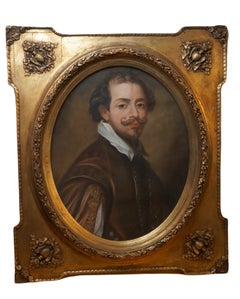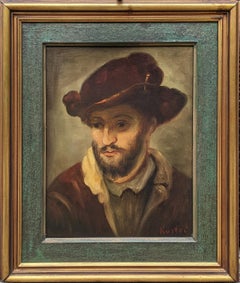Items Similar to Portrait of a Man
Want more images or videos?
Request additional images or videos from the seller
1 of 3
Portrait of a Man
$52,500
£40,518.61
€46,128.02
CA$74,965.45
A$81,764.48
CHF 43,082.90
MX$980,574.13
NOK 542,468.73
SEK 506,112.35
DKK 344,494.91
About the Item
Provenance:
with Leo Blumenreich and Julius Böhler, Munich, 1924
Dr. Frederic Goldstein Oppenheimer (1881-1963), San Antonio, Texas; by whom given to:
Abraham M. Adler, New York, until 1985; thence by descent to the present owners
While old inscriptions on the verso of this panel propose its author to be Hans Holbein and the sitter Sir John More—a lawyer, judge, and the father of Sir Thomas More—this fine portrait has long been recognized to be by a Flemish hand. Max Friedländer gave the painting to Bernard van Orley (1487/1491 – 1541) in 1924, but did not include it in the volume dedicated to the artist in his Early Netherlandish Paintings. The painting differs considerably from our modern understanding of Bernard van Orley and his limited oeuvre, which includes only one signed and dated portrait.
Our portrait is by an unknown hand working around the year 1520. It records a vogue in portrait style and in fashion that was current in that period in Flanders. The dress, particularly the hat and the fur coat, most closely resembles those found in the portraits of the period by Quinten Metsys (his name variously spelled Quinten and Metsys). His portrait in the Gemäldegalerie in Berlin (Fig. 1) provides an interesting comparison with the present work, highlighting similarities in the costume, hat, and pose, but also the differences in style and composition.
This work was formerly in the collection of Dr. Frederic Goldstein Oppenheimer (1881–1963), whose collection of predominantly Flemish Renaissance paintings is now at the McNay Art Museum in San Antonio, Texas.
- Dimensions:Height: 11 in (27.94 cm)Width: 9 in (22.86 cm)
- Medium:
- Movement & Style:
- Circle Of:Quentin Massys (1466 - 1530, Flemish)
- Period:
- Condition:
- Gallery Location:New York, NY
- Reference Number:1stDibs: LU1026198422
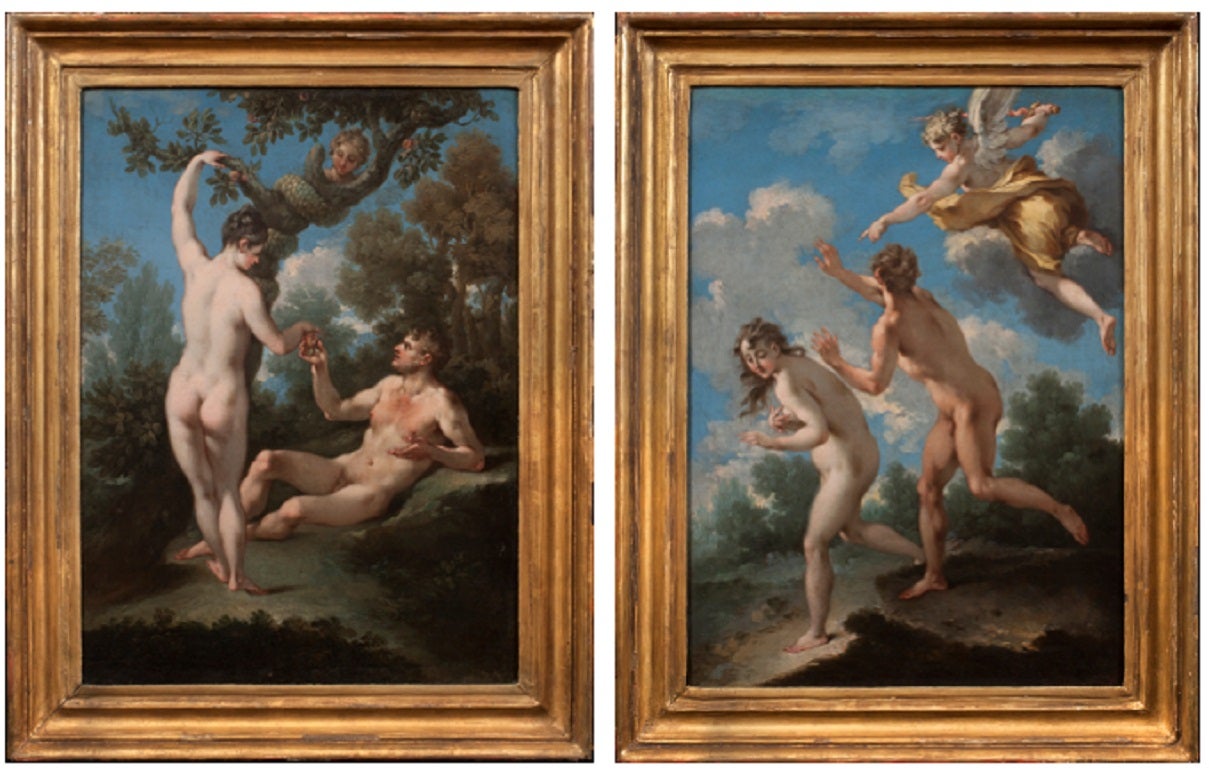
About the Seller
5.0
Recognized Seller
These prestigious sellers are industry leaders and represent the highest echelon for item quality and design.
Established in 1997
1stDibs seller since 2012
24 sales on 1stDibs
Typical response time: 7 hours
- ShippingRetrieving quote...Shipping from: New York, NY
- Return Policy
More From This Seller
View AllThe Archangel Gabriel
By Cristobal de Villalpando
Located in New York, NY
Provenance: Private Collection, Cranston, Rhode Island (by the 1950s?); by family descent until sold at:
Bill Spicer Auction, North Kingstown, Rhode Island, 26 January 2011; where a...
Category
Late 17th Century Old Masters Figurative Paintings
Materials
Canvas, Oil
Portrait of a Bewigged Gentleman
By Vittore Ghislandi
Located in New York, NY
Vittore Ghislandi, called Fra Galgario
Provenance:
Robert L. and Bertina Suida Manning, New York, ca. 1966-1996
Private Collection, USA
Exhibited:
“Eighteenth Century European Pai...
Category
18th Century Baroque Paintings
Materials
Copper
Portrait of Dr. Juan Ignacio Galves
Located in New York, NY
Signed and dated, along the bottom of the oval:
Dõr. Juan Ygnacio Galves nació el año de 1797. / Por J. Celestino Figueroa año de 1841.
Provenance: Luis Alberto Acuña (1904–1994), ...
Category
1840s Portrait Paintings
Materials
Canvas, Oil
Study of a Franciscan Saint, probably San Diego de Alcalá
Located in New York, NY
Provenance: Ivan E. Phillips, Montreal and New York, until 2023.
The brothers Bartolomé Carducho and Vicente Carducho, both born and trained in Florence, settled in Spain where they made their careers. Vicente worked on numerous commissions for both the church and the Spanish court...
Category
17th Century Old Masters Drawings and Watercolor Paintings
Materials
Paper, Chalk, Ink, Pen
Head of a Classical Poet (Socrates?)
By Pier Francesco Mola
Located in New York, NY
Provenance:
Possibly Antonio Amici Moretti, Rome, 1690
Roy Clyde Gardner, Union, Mississippi, 1970s until 2004; by whom given to:
Mississippi Band of Choctaw Indians, 2004-2010
Lit...
Category
17th Century Baroque Paintings
Materials
Canvas, Oil
Allegory of Abundance
Located in New York, NY
Painted in collaboration with Hendrick van Balen (Antwerp, 1575 – 1632).
Provenance: Private Collection, Uruguay, since the 1930s.
The eldest son of Jan Br...
Category
17th Century Old Masters Paintings
Materials
Copper
You May Also Like
Portrait of a Young Boy
Located in Saratoga Springs, NY
Attributed Federico Icilio Joni (1866-1946, North Italian Sienese)
“Portrait of a Young Boy”
17 ¾ x 14” (on poplar panel)
Icilio Federico J...
Category
19th Century Old Masters Figurative Paintings
Materials
Oil, Panel
$20,000
Portrait of a Young Man
By (After) Rembrandt van Rijn
Located in London, GB
Pupil of Rembrandt
Portrait of a Young Man
17th Century
Oil on oak panel
Image size: 4 1/4 x 5 inches (11 x 13 cm)
Dutch ebonised frame
This small portrait is of a young man, staring inquisitively out towards the viewer. The realism of his appearance is striking, with great care taken in the depiction of the man’s features - for example, his full lips and the slight bump in the bridge of his nose. The man wears a rich burgundy doublet and a black cap and is adorned with gold accessories, indicating a degree of wealth - it is likely that this is a miniature portrait for a wealthy patron. The warm flesh tones of this painting and the intricate rendering of the man’s curly brown hair demonstrate the artistry of the painter, who has successfully captured the image of youth within his brushstrokes.
Rembrandt’s Pupils
Upon completing his artistic education, Rembrandt opened a studio and began to take students - the first of which were Gerrit Dou and Isaac Jouderville. The studio functioned as an art school, in which materials and guidance were provided - contrary to the studios of his peers, Rembrandt did not offer lodging to his pupils. The families of prospective pupils had to pay Rembrandt 100 guilders (enough for a house at the time) for this artistic education, and the profits from any works produced by pupils under Rembrandt would be paid to the master rather than kept by the student-artist - this contributed substantially to the master’s income.When taking on pupils, Rembrandt looked for those who could already paint, and guided their styles to reflect his. By choosing pupils who were somewhat experienced artists, Rembrandt had an array of painters that could be involved at any stage of assisting with the creation of his works - in this way, Rembrandt’s pupils often functioned as studio assistants as well. In order to perfect Rembrandt’s style, pupils would paint copies of their teacher’s works, sometimes adding their own distinct variations. They would use the same subjects and models as Rembrandt himself, and would accompany him on outdoor trips to paint nature and landscapes. The extensive copying and utilisation of same source materials has rendered Rembrandt’s work and the work of his pupils difficult to differentiate, even in the modern era.At least 50 pupils were taught by Rembrandt, with many continuing on to become his studio assistants. A few graduated into successful artists in their own right - for example, Govaert Flinck...
Category
17th Century Portrait Paintings
Materials
Oak, Oil, Panel
Portrait of a well-to-do gentleman
Located in DEVENTER, NL
Portrait of a well-to-do gentleman in pastel on parchment.
Signed left: Marteau L. 1760.
French School, possibly by Louis Marteau (1715 – 1804)
In a gilded 19th century frame.
Dimen...
Category
18th Century Portrait Paintings
Materials
Pastel, Parchment Paper
Portrait of a Man, Framed Oil Painting on Canvas after Friedrich Schaarschmidt
Located in Long Island City, NY
This painting, signed in the lower right "Kuster", is a stylized recreation of "Untitled - Portrait of a Man" by Friedrich Schaarschmidt. Like the figure in Schaarschmidt's painting,...
Category
Mid-20th Century Portrait Paintings
Materials
Oil
Portrait of a man
By Antoine Jean Gros
Located in Paris, IDF
French school from the beginning of the 19th century
Three-quarter bust portrait of a man
Oil on panel
28 x 21 cm
Circa 1820
This portrait of a man, typical of the French school o...
Category
Early 19th Century French School Portrait Paintings
Materials
Oil
Italian Large Renaissance Nobleman Portrait
Located in Douglas Manor, NY
4069 Italian nobleman oil painting
unframed
Category
1960s Portrait Paintings
Materials
Oil
More Ways To Browse
Sir Thomas More
George Spencer Watson
Grace Kelly Signed
Grisaille Portrait
Hunt Slonem Her Majesty
Hunt Slonem Queen Elizabeth
Hunt Slonem Queen
Ireland Old Masters
Jocelyn Wildenstein
Johan Zoffany
Jose Lopez
King Louis Xiv Portrait
Lady With Tambourine
Lee West
Leonie Lebas
Lord Nelson Portrait
Male Old Master Portraits
Man With Feather Hat


